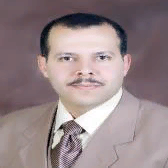
Abdallah A. Alshennawy
Work place: Design and prod. Eng. Dept. , Faculty of Engineering, Tanta University, Egypt
E-mail:
Website:
Research Interests: 2D Computer Graphics, Computer Graphics and Visualization, Computer Vision
Biography
Dr. AbdallAh A. Alshennawy was Born in El Mansoura -Egypt, at 1968-03-10, B.Sc. 1991 and M.Sc. in Computer Vision of Two Dimensional Measurement and Inspection from Prod. And Design Eng. Dept., El Mansoura University, Egypt, 1995 and PhD. in Computer Vision of Three Dimensional Measurement and Inspection from Prod. And Design Eng. Dept., El Mansoura University, Egypt, 2003. Nowadays, he is a Lecturer at the Production and Design Engineering dept., Faculty of Engineering, Tanta University, Egypt
Author Articles
Self Learning Intelligent Controller of Electro hydraulic Actuator
By Ayman A.Aly Abdallah A. Alshennawy A.Abo-Ismail S.Dossokey
DOI: https://doi.org/10.5815/ijem.2013.01.03, Pub. Date: 29 Jun. 2013
The use of electro-hydraulic cylinders in industry has been becoming increasingly popular. A Fuzzy Logic Controller (FLC), which consists of the linguistic defined fuzzy sets and the control rules, is designed to control of the electro-hydraulic cylinder. Using the triangle shaped membership function; the position of the servo cylinder was successfully controlled. When the system working condition is altered, the control algorithm is shown to be more robust compared to the PID controller.
[...] Read more.Intelligent Vision Methodology for Detection of the Cutting Tool Breakage
By Abdallah A. Alshennawy Ayman A. Aly
DOI: https://doi.org/10.5815/ijitcs.2013.06.06, Pub. Date: 8 May 2013
In this paper, a new Intelligent system based on neurofuzzy for detecting and diagnostics the wear and damage of the milling cutter is presented. The compatibility between the computer vision and neurofuzzy techniques is introduced. The proposed approaches consists of capturing the milling cutter image, Fuzzy edge detection, Chain code technique for feature extraction and finally, apply the neural network on the feature. The results of the study are three different diagnostics models, The first is diagnostic model for the original profile of the perfect cutter, the second is model for the wearied profile and the third is model for the damage profile. Experimental test results show that the proposed system is reliable, practical and can be used for the easy distinguish between the wear and damage automatically.
[...] Read more.Other Articles
Subscribe to receive issue release notifications and newsletters from MECS Press journals